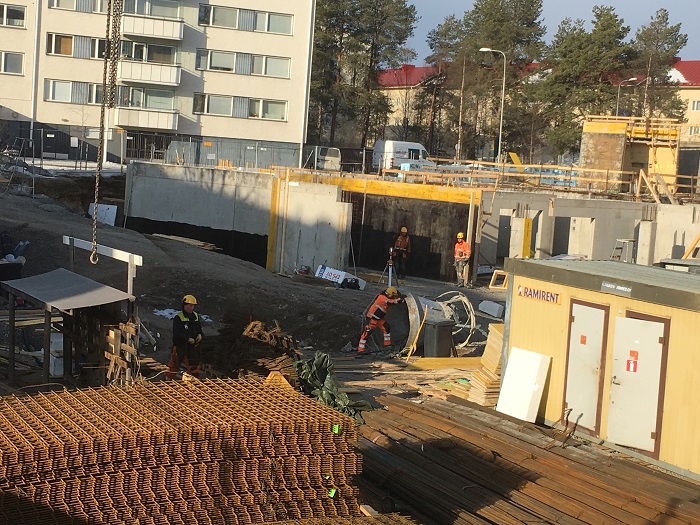Construction growth to slide in 2018: RAKSU
Published : 26 Sep 2017, 23:00
Updated : 27 Sep 2017, 10:04
Growth in the construction output volume will be between 3 and 6 per cent this year and between 0 and 3 per cent next year, said the RAKSU group in a report published on Tuesday.
The RAKSU group studies trends in construction led by the Finance Ministry and assesses the development of economic trends in construction of residential buildings, infrastructure and renovation. The members of the group include key authorities and members of organisations in the field.
The RAKSU group estimated that this year construction will start on 40,000 housing units, which is an exceptionally high number. According to RAKSU’s prognosis, next year, the number will decline by a few thousand, said a press release.
The current Finnish economic circumstances and construction are good. High-rise construction is especially active. It is, however, to be estimated that the growth of construction will slow down, because the cubic metre volume of planning permissions took a downturn between April and June from the previous year. This was mainly brought about by a decline in the number of industrial construction planning permissions.
Non-residential building construction will slow down in 2017. But the number and volume of construction starts will rise again with the growth of industrial construction towards the end of 2018. The role of consumers will increase and that of the investors decrease in the market of privately financed owner-occupied housing. Over the recent years, public sector construction projects have been of major significance. This is now expected to lessen in importance.
The need for housing repairs will continue to increase as the age structure of the building stock calls for replacement investments. The RAKSU group estimated that renovation construction will grow by 2 per cent during the ongoing year and the next. Civil engineering has increased strongly over the past two years, but its growth is expected to slow down to 1 to 2 per cent.
Construction is active in Finland’s growth areas. The situation is not equally good across the country. Rapid construction output increases the prices of production inputs, which is reflected in increased total construction costs. The growth of the number of people employed in the construction sector is also expected to slow down in the latter part of 2017.


